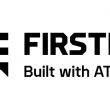Marriage of convenience
In most areas of the U.S. economy, the past few years have been challenging, with skyrocketing unemployment, a spate of individual and corporate bankruptcies, and government entities facing severe budget woes. In short, discretionary income has been relatively scarce, and the competition for those dollars has become fierce.
Such a rough economic environment could have been devastating for the mobile-communications industry as recently as 15 years ago, when cell phones largely were viewed as luxuries and the Internet still was being perceived by many Old Media leaders as a fad that would soon run its course. If fiscal realities forced a choice between a reliable landline telephone and the spotty coverage and service of first-generation cellular offerings, most people at the time would have dropped the mobile alternative.
Of course, the reverse is true today. Mobile communication is valued more than ever, as studies indicate that 25% of all Americans have dropped their landlines in favor of cellular service, while the penetration rate for such devices in the U.S. has exceeded 90%, according to Dave Miller, a spokesman for Cellular South, a regional cellular carrier based in Mississippi.
“We went from being a novelty to a necessity,” Miller said.
Furthermore, an explosion in mobile data usage has created more network traffic than ever before — and most experts believe that the demand for data will continue to increase for several more years.
As usage increases, so does the need for more cell sites, whether they are standalone cellular towers or similar equipment housed in or atop a building. Fourth-generation technologies such as Long-Term Evolution, or LTE, place an even greater premium on smaller cells in network architectures to meet users’ coverage and performance demands — which puts carriers and independent owners of cell sites/towers in an envious position.
“We have a [minimal] amount of churn, maybe 1%,” said Mark DeRussy, director of capital markets for SBA Communications, an independent owner/operator of cell sites and wireless towers. “We’re very fortunate.”
Making designed sites a reality
Indeed, the present and future of companies owning wireless towers appears to be bright, as the demand for cell sites appears to be outpacing the supply, in part because it has become increasingly difficult and time consuming to get sites approved throughout the country. While citizens typically want cellular coverage, many do not want cell sites — whether they are standalone towers or antennas located on existing structures such as large buildings or water towers — in locations where they can detract from the local scenery.
“There’s very much a NIMBY — not in my back yard — attitude,” DeRussy said. “So the amount of time it takes to get something through the zoning process takes a little bit longer each year and the resistance is not going away.
“You definitely are going to get opposition, because it’s going to end up in somebody’s back yard, so there’s going to be resistance in any situation.”
And that resistance typically results in additional time before a site location is approved. In California — traditionally one of the tougher states in which to erect a tower — the process can be very lengthy, said mobile wireless consultant Andrew Seybold.
“Now, in Santa Barbara County, the average time to construct a cell site — because of neighbor complaints and everything else — is somewhere around two years,” Seybold said. He noted that the process was even longer in the past, before federal laws that established “shot clocks,” which require governments to make decisions in a timely manner, were enacted to prevent indefinite delays. “There are hearings, and there are people who show up at the hearings who are concerned about aesthetics, they’re concerned about the size of the tower, what it looks like and everything else,” Seybold said.
“So the process can drag on for several hearings,” he continued. “After one hearing, the planning commission might say to the vendor, ‘You need to go back and do some more planting of greens and stuff around the area,’ or ‘Can you lower the tower by 20 feet?’ or whatever. Then they come back a month later with a new plan and then it drags on [some more], and then finally there’s a ruling by the planning commission.”
Typically, the process in California begins with an architectural review board before the matter reaches a planning commission, Seybold said. With each tweak required by the local government, the entity seeking permission to establish the cell site — a carrier or an independent tower company — must do additional engineering and design work. In addition, attorneys that charge hundreds of dollars per hour have to be paid, whether they are making a case for the adoption of the cell site or simply sitting in the audience during an extended meeting, waiting for their item to be reached on the agenda.
“It drags on and on and on,” Seybold said. “And a lot of these [government bodies] are hesitant about approving something without the city tweaking it a little bit, because they figure that’s their purview. So, by the time you’ve done this, you’ve run up — with the attorneys and everything else — a fair amount of cost.”
Of course, the costs are not limited to the approval process. Building a new tower site typically costs about $250,000, while locating a site on an existing building or other structure can require as much as $200,000, because of complications regarding the location of antennas, base-station equipment and other items, which must be done in a manner that is satisfactory to the landlord, Seybold said.
Once a site is approved and constructed, collocating additional antennas and equipment usually is an easier process than trying to build an entirely new tower, but it still can take six months in California and success is not guaranteed, Seybold said.
“People complain about the number of antennas,” he said. “There’s one site here where people count the number of antennas on the tower and, if there’s a new antenna on there, they complain about it.
“AT&T has a site very close to me where they wanted to increase the size of their dishes for their microwave backhaul, and it got turned down because the residents fought it. California’s unusual, but it’s not all that unusual.”
Sharing vertical real estate
Given all the time, money and effort that is required to get a cell site approved, constructed and maintained, most sites now are established with the idea that multiple wireless operators will have antennas and gear at the site. That was not always the case — until the late 1990s, wireless carriers typically handled the cell-site approval process and construction of sites.
“Back in the day, it was almost a covert, stealthy deal,” said David Smith, director of engineering and development at Cellular South. “If you built a tower, you kind of kept it quiet to competitors, because you didn’t want them to know you had a tower — it was more of a competitive thing then. You wanted to force them to build their own tower.”
DeRussy echoed this sentiment.
“Carriers owned their own towers, because they considered them to be strategic back in the days when they were rolling out coverage,” he said. “It was strategic to be able to cover more of the population than a competitor. That became less of an issue when all of the carriers basically were able to cover all of the entire country at the turn of the century.”
However, when multiple carriers were able to achieve nationwide coverage, many carriers divested their cell-site holdings about a decade ago to independent tower companies that handle the operation and maintenance of most sites used today.
“That was the catalyst that allowed the independent tower business to gain scale,” DeRussy said.
For these independent companies, it is in their financial interest to serve as many operators on a single site as possible. And that model is one that local government entities appreciate, because it reduces the number of cell sites that have to be approved in their jurisdictions.
“We have about 2.5 tenants per tower across our portfolio, and we have the capacity across the portfolio to have about five tenants,” DeRussy said.
While multiple carriers may occupy the same tower, little else is shared — each carrier wants full ownerships and control of all electronics, and each carrier typically supplies its own backup power, DeRussy said.
“Carriers are very loathe to give up control at that level, because one of the primary ways that carriers compete with each other and market their service is based on the perception of network quality,” he said. “It becomes more difficult to control your quality of service when you start sharing the active part of the equipment at the tower.”
LTE and public safety
In the near future, the vast majority of growth in the commercial wireless arena will come from traditional sources — carriers deploying the next generation of technology. In this instance, carriers like Verizon Wireless and AT&T are deploying fourth-generation Long Term Evolution (LTE) on 700 MHz spectrum cleared by television broadcasters in 2009.
From a tower perspective, carrier LTE deployments initially will require additional sites, because Verizon and AT&T plan to maintain their existing 2G infrastructure for voice and 3G equipment to help address the growing data demand while utilizing spectrum other than 700 MHz.
But beyond the traditional commercial carriers, there is potential for at least one other 700 MHz LTE player in each market, as public-safety agencies pursue plans to deploy the 4G data technology in their first experience with cellular architecture, after using high-site land mobile radio, or LMR, systems for mission-critical voice for decades.
Many public-safety officials have expressed hope to leverage existing LMR sites when building their LTE networks, but the fact remains that many more LTE sites will be needed than have been incorporated in traditional public-safety radio networks. For example, Seybold said that Santa Barbara County uses a six-site network for LMR, but initial estimates call for 64 LTE sites to provide similar coverage in the area using the 4G technology.
As a result, most industry experts believe that public-safety entities ultimately will seek to leverage existing commercial cell sites to complete their LTE networks.
“Basically, the towers are going to get more loaded with public safety wanting to be another one of the members needing vertical real estate, so to speak,” said Smith of Cellular South, which plans to roll out LTE — with voice capability — during the latter part of this year.
Harlin McEwen, chairman of the Public Safety Spectrum Trust (PSST), agreed that most public-safety entities will have to consider collocating at commercial cell sites and other partnership arrangements to make LTE networks a reality at a time when most government entities are facing budget shortfalls.
“I think, in this economic climate, unless there’s money available through federal subsidy or whatever, that this is going to be very difficult,” he said, noting that the PSST is among the public-safety organizations lobbying Capitol Hill for federal funding to finance the proposed 700 MHz networks.
Smith said that he can envision myriad partnerships between public safety and carriers, particularly regional operators like Cellular South. Although carriers are hesitant to share network assets with each other, Smith said that he believes they would be more open to sharing assets with public safety, especially in situations where a government entity can provide a reciprocal asset, such as enhanced backup power, additional hardening of a site and access to LMR towers.
In addition to the tangible benefits such as these, carriers may believe that being the network that public safety uses potentially could bolster its marketing effort. In addition, if a major disaster occurs and part of the carrier network is unavailable, government officials would have greater incentive to work with the carrier to help it to fully restore its network quickly, because it would benefit public safety directly, Smith said.
“All of those things we would be open to,” Smith said. “The bottom line for us is that it costs us a certain amount of money to provide coverage to our customers. We want reliability, as well. Their needs and our needs are going to be a lot of the same, and I see where there could be a lot of shared assets, shared networks and shared interests there.”
Related Stories
















